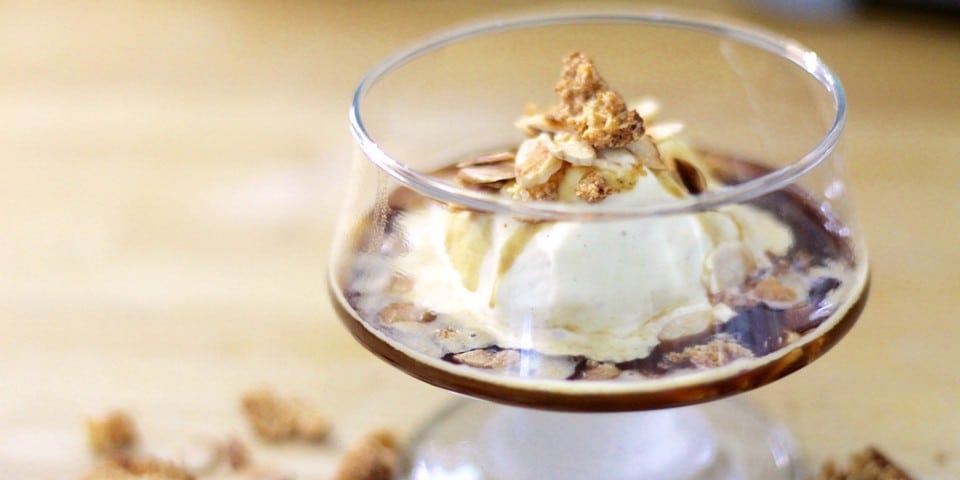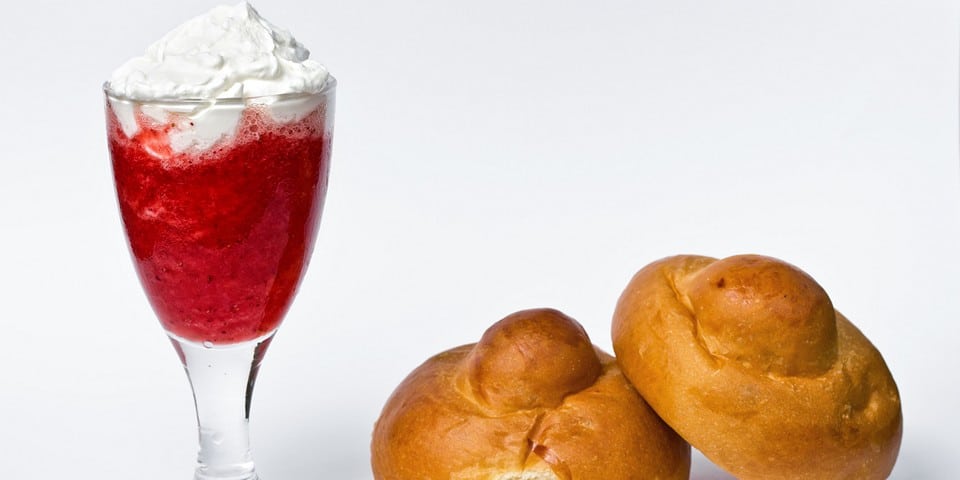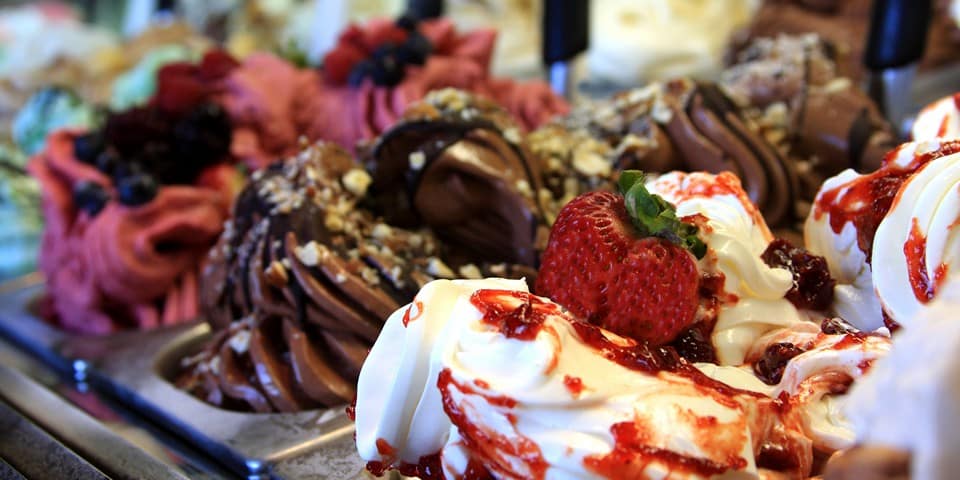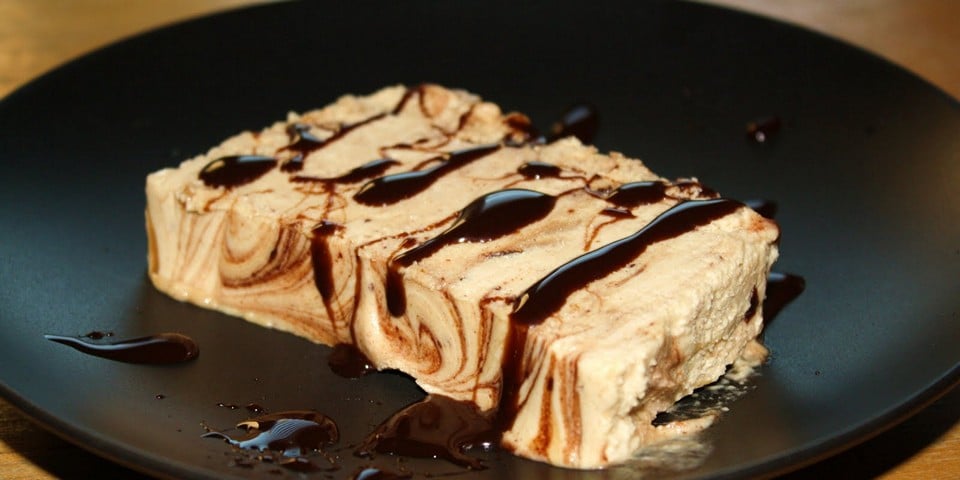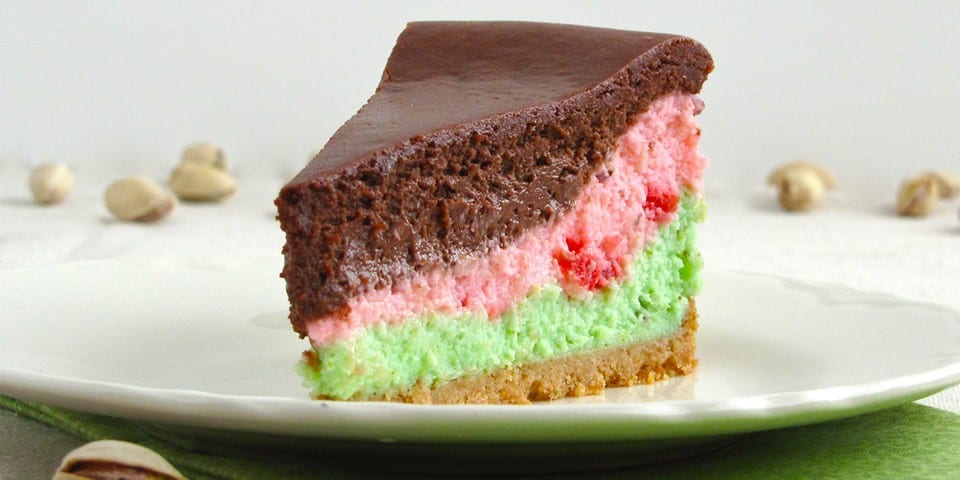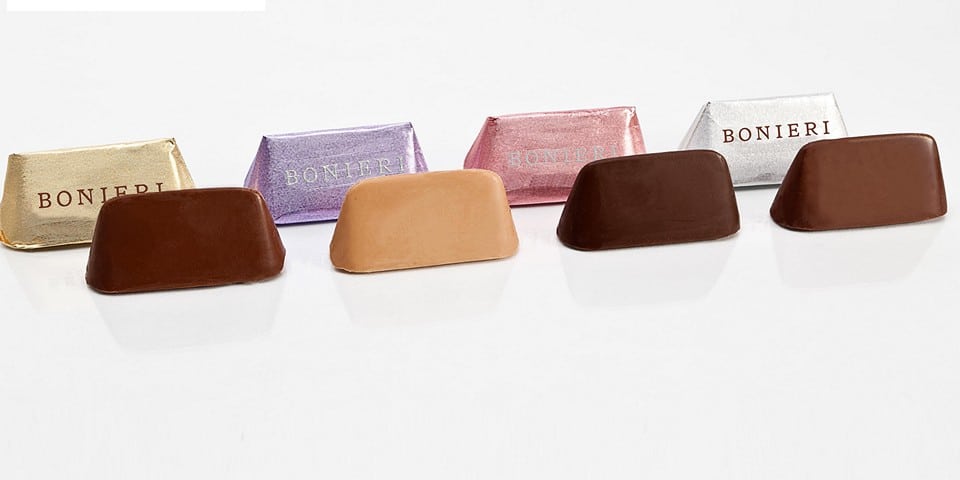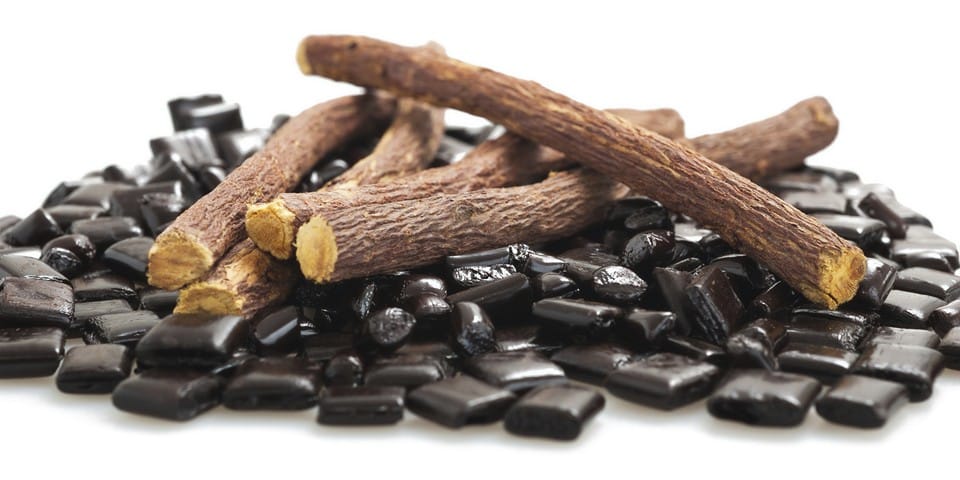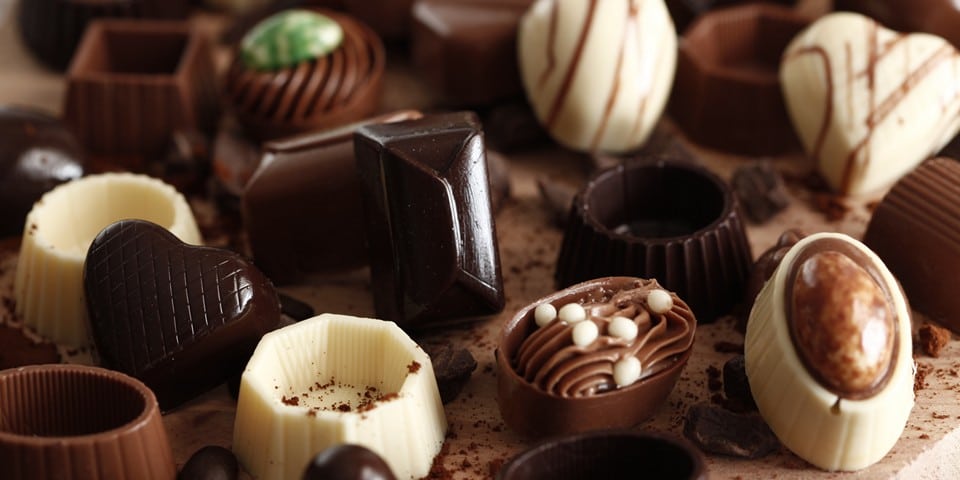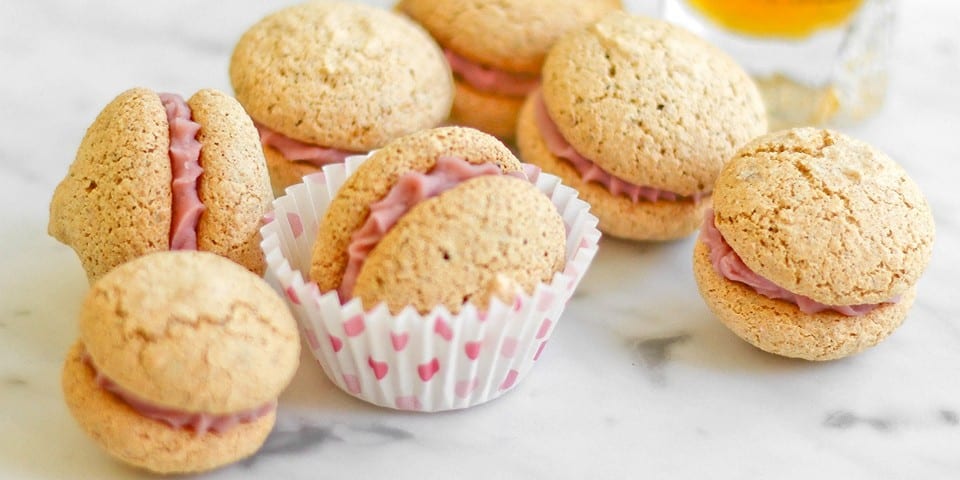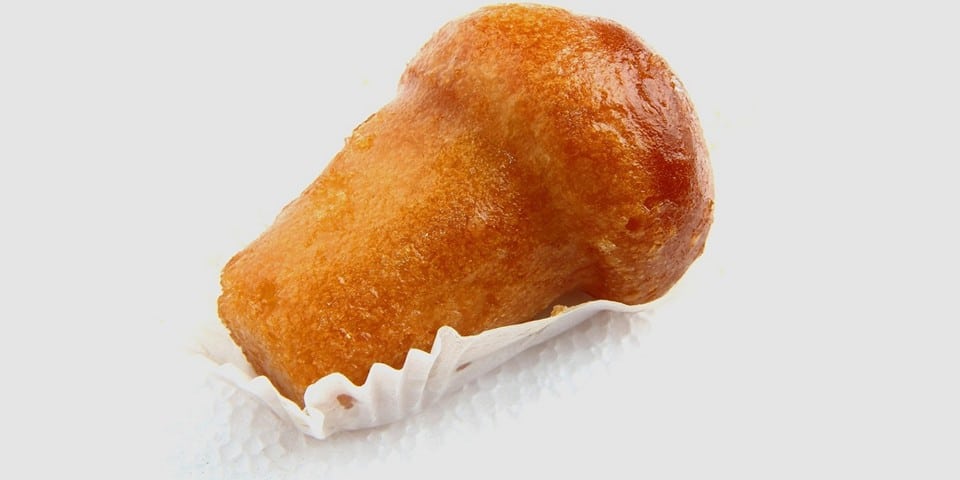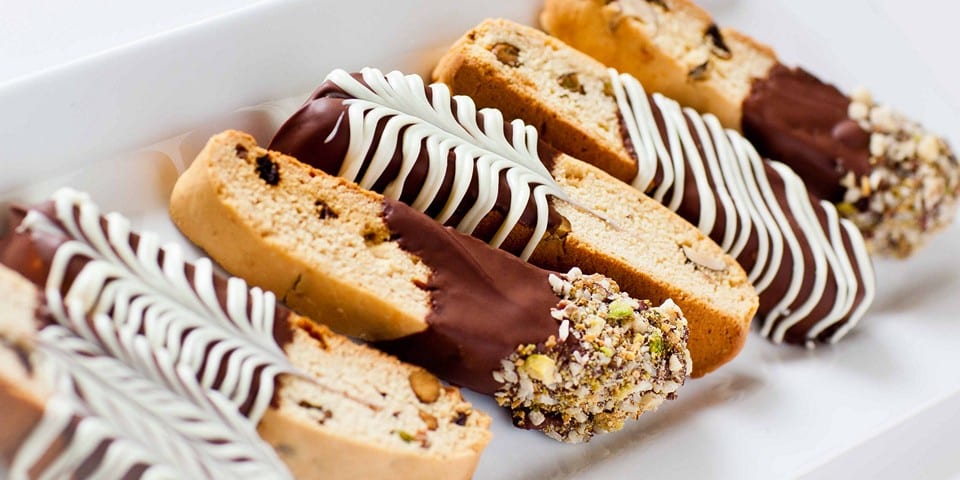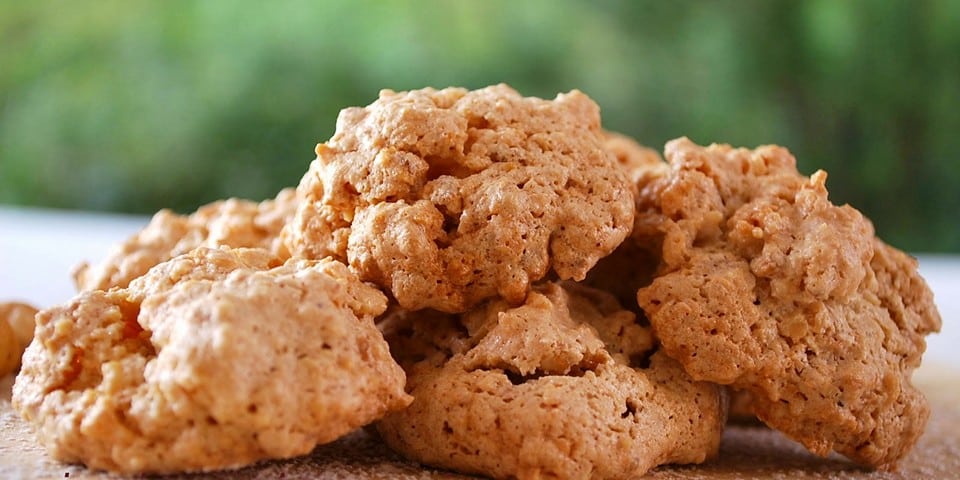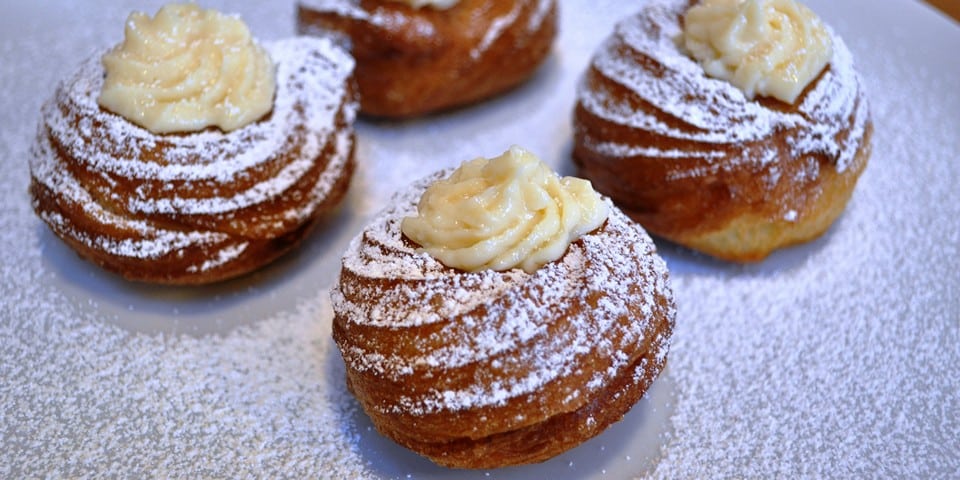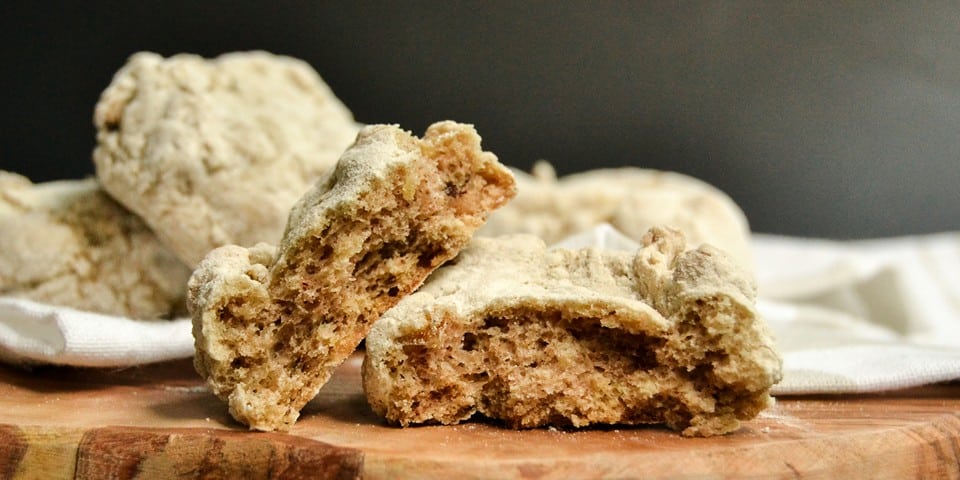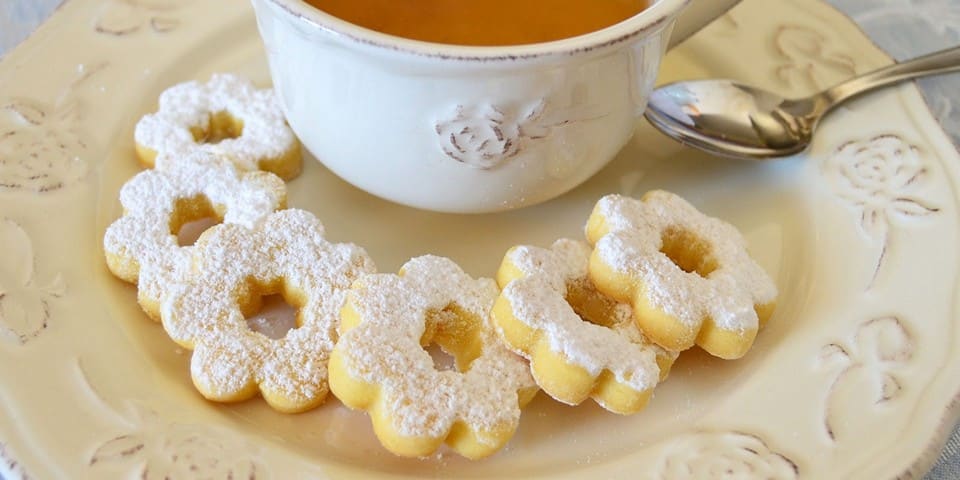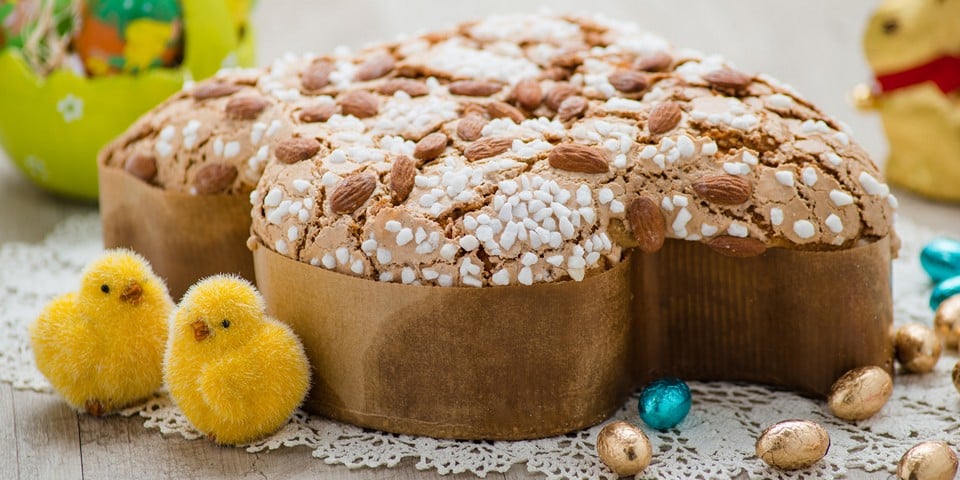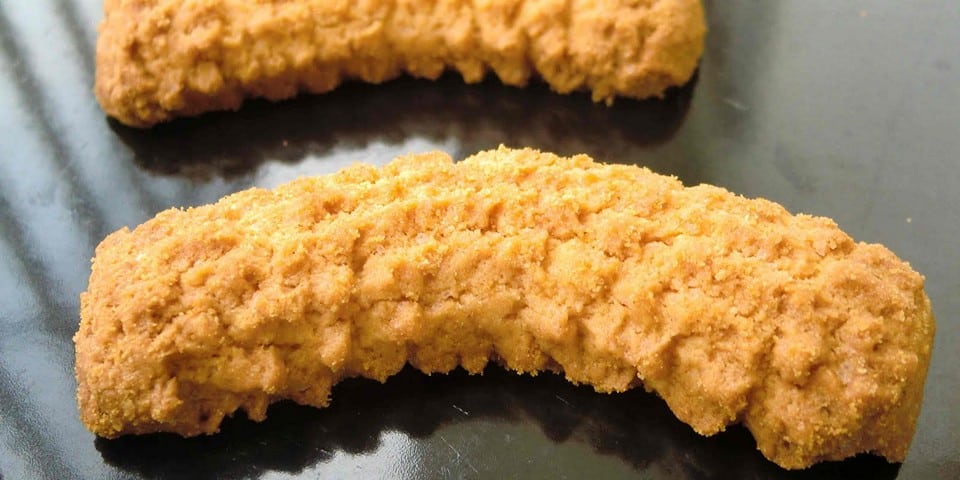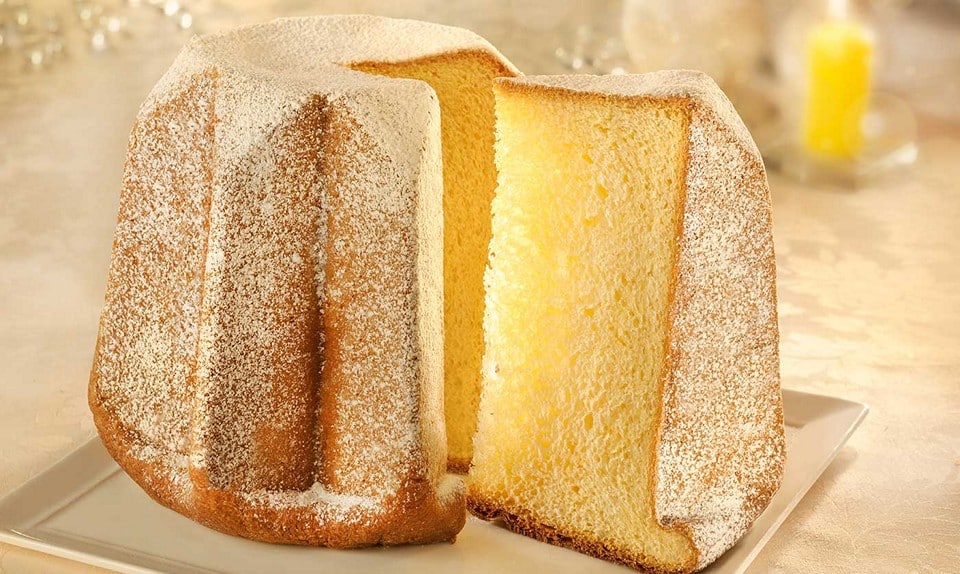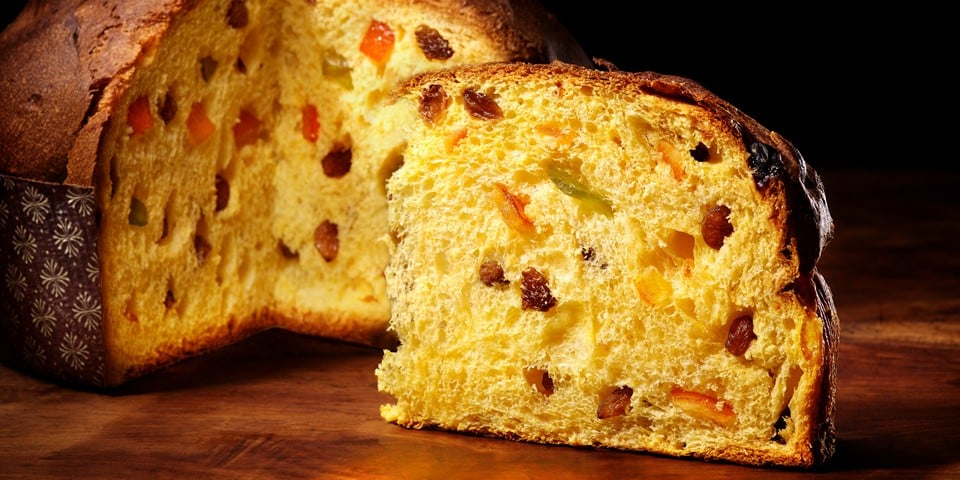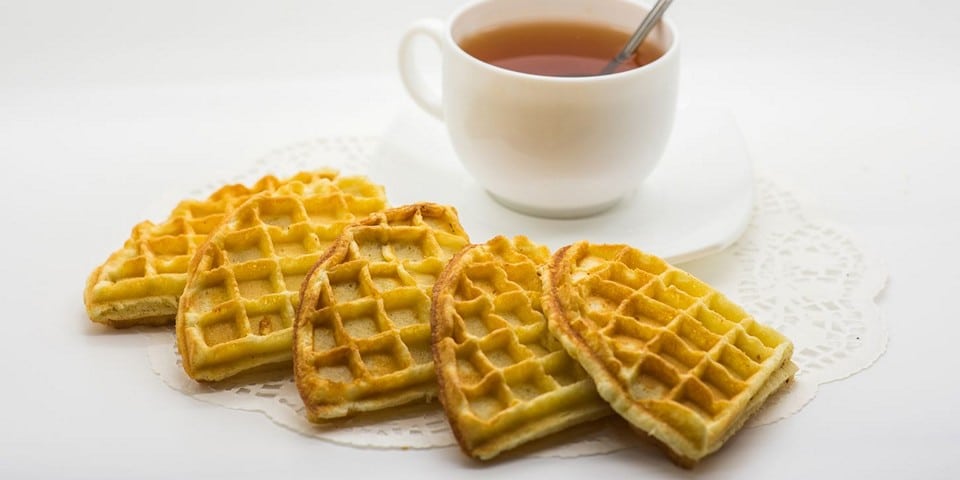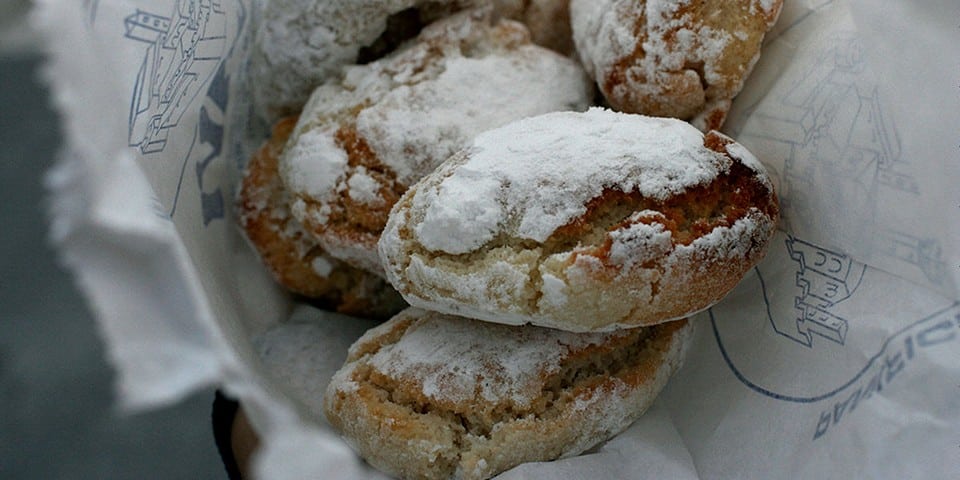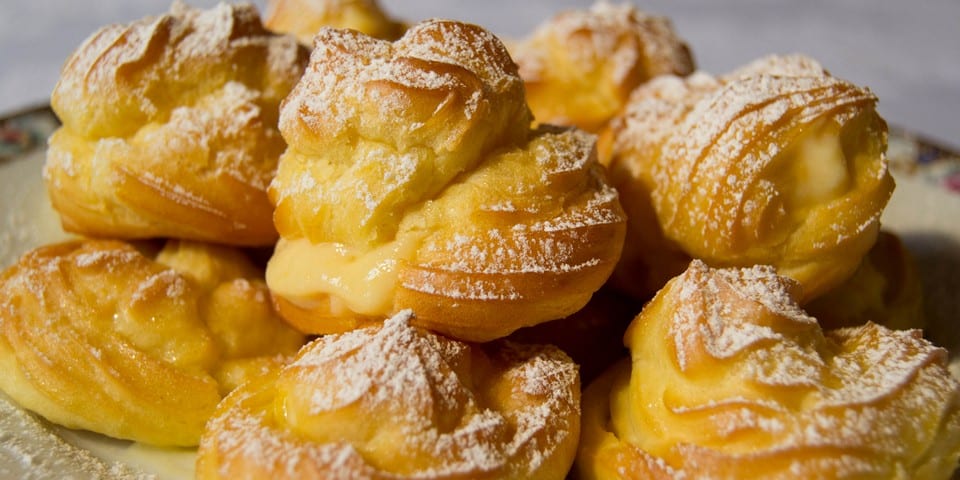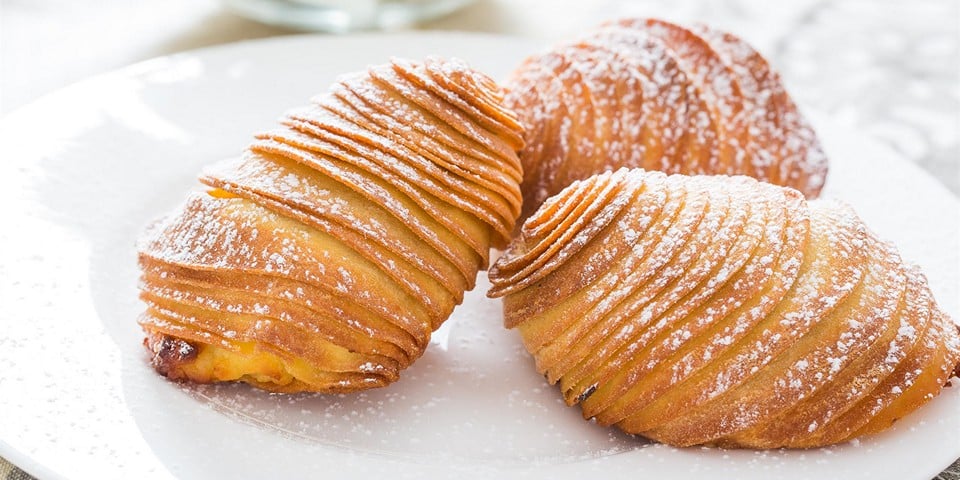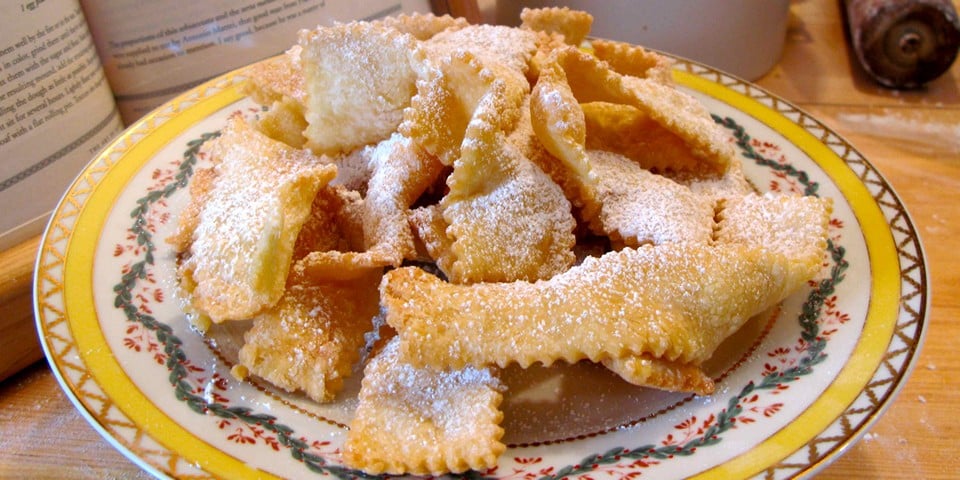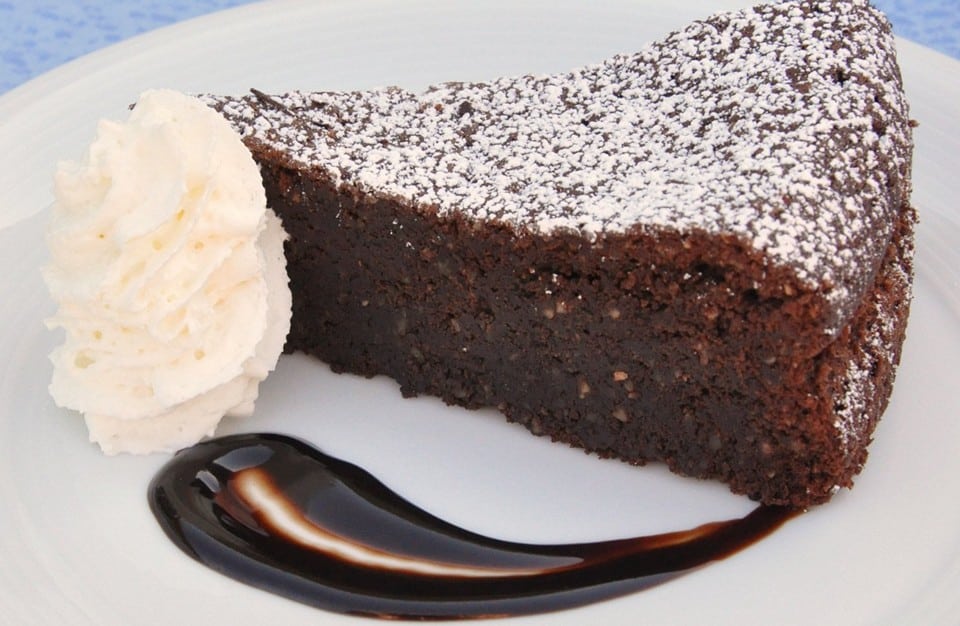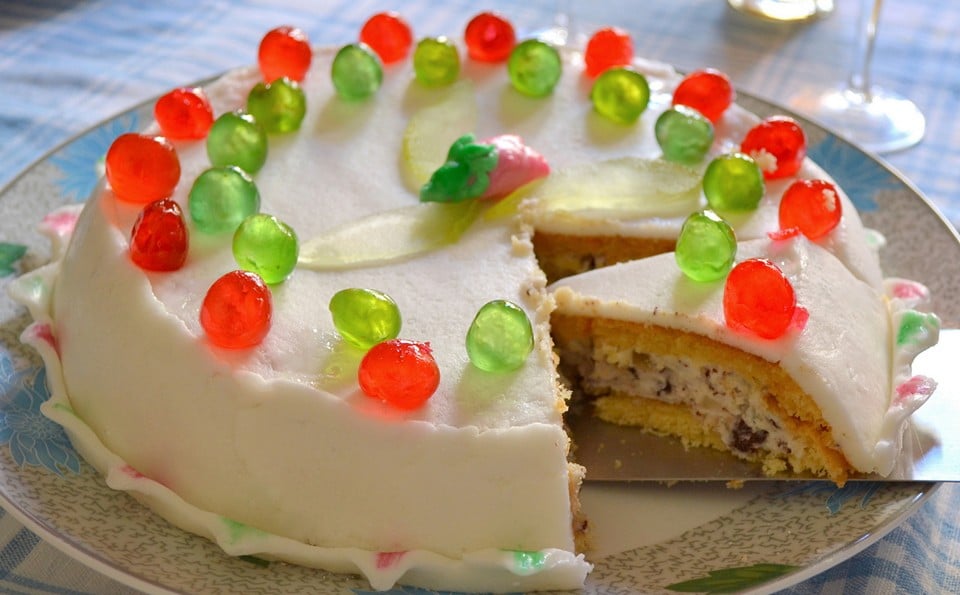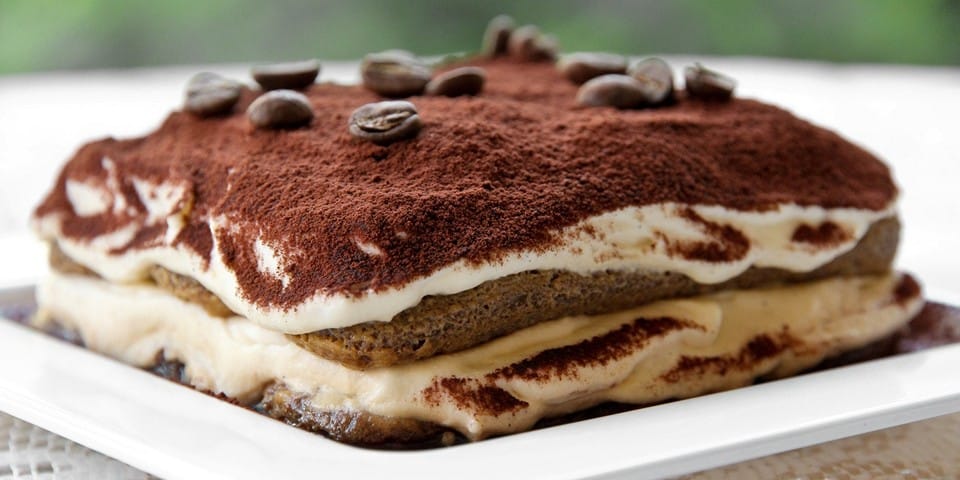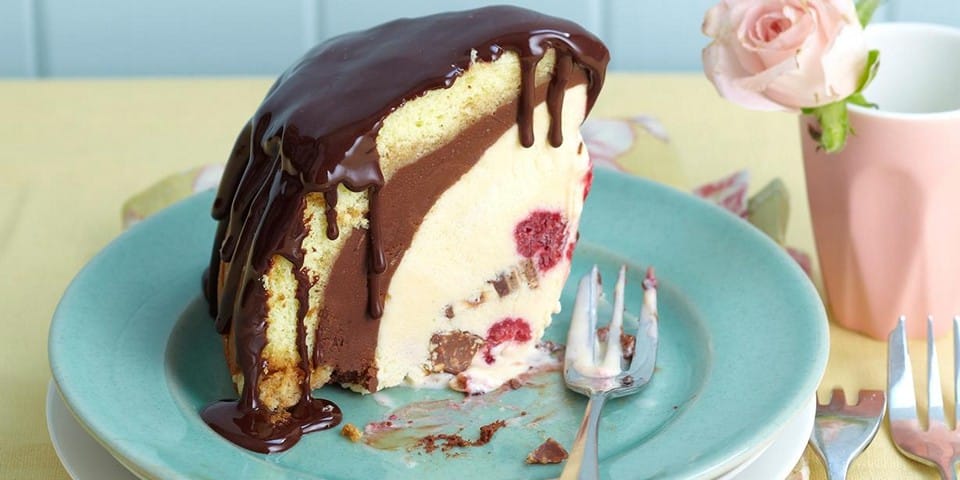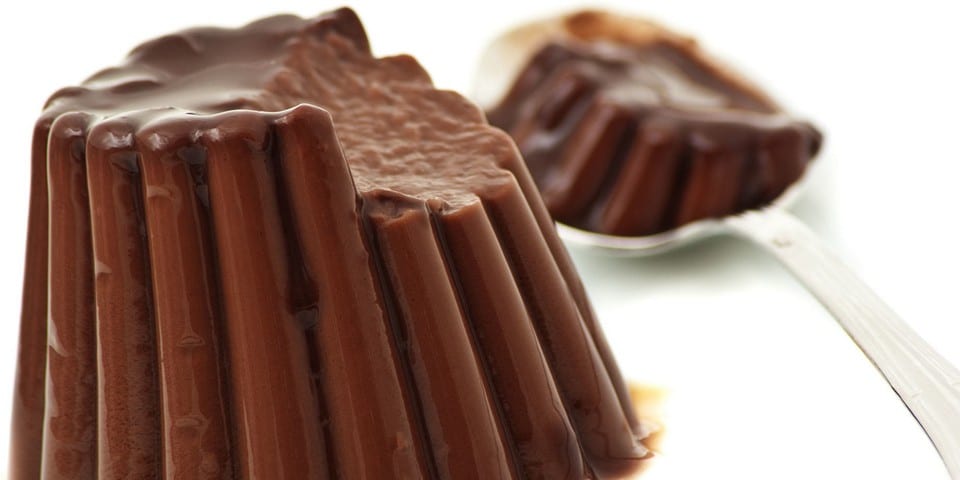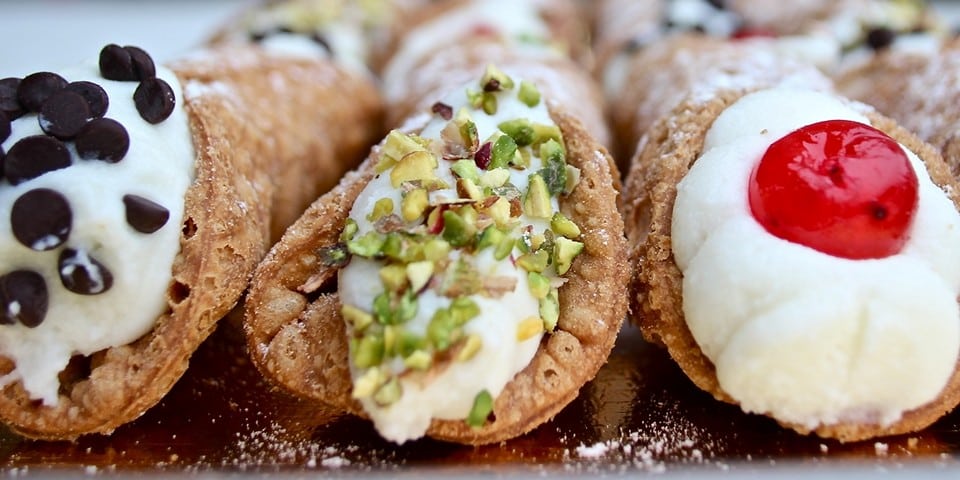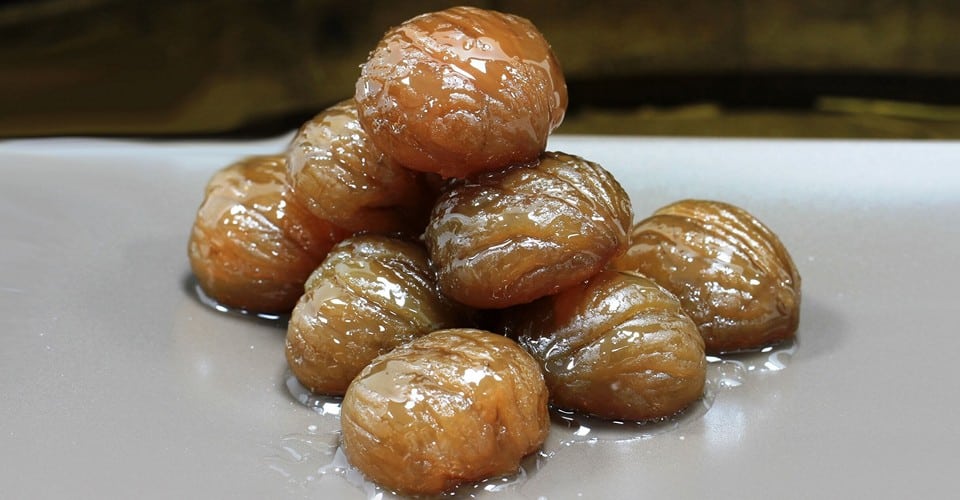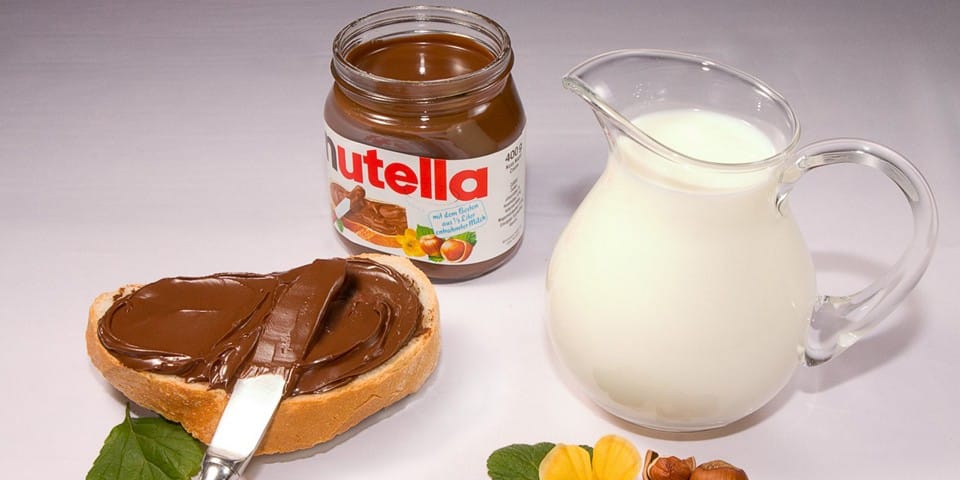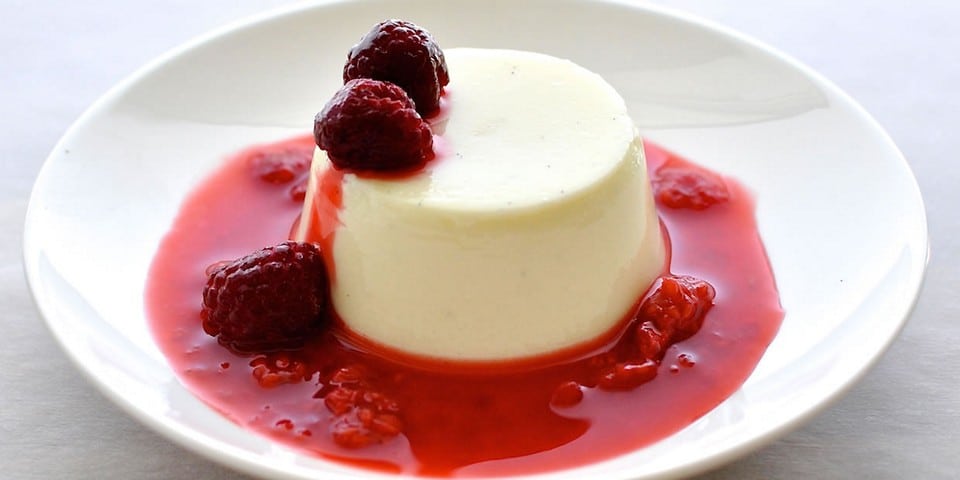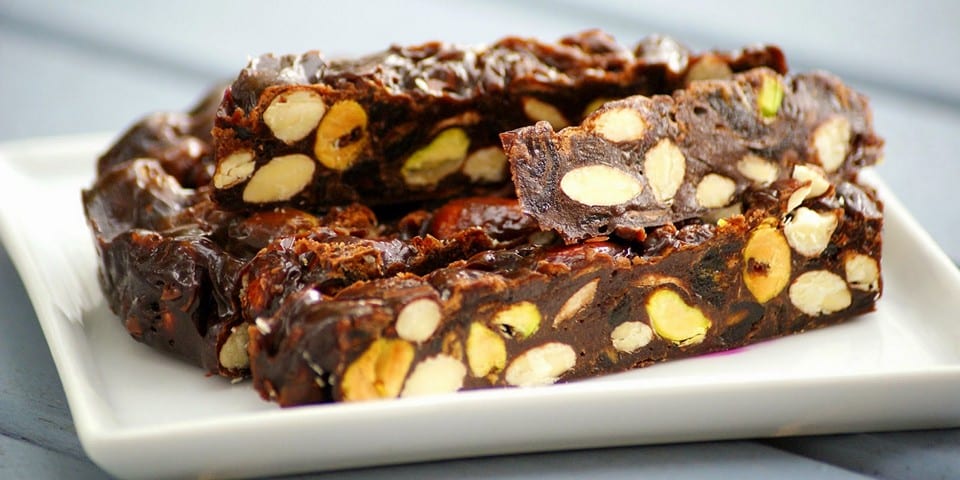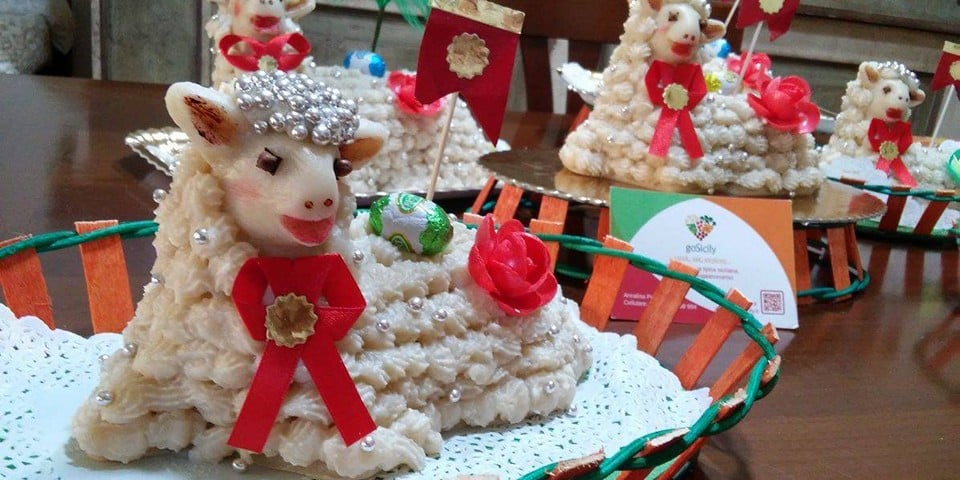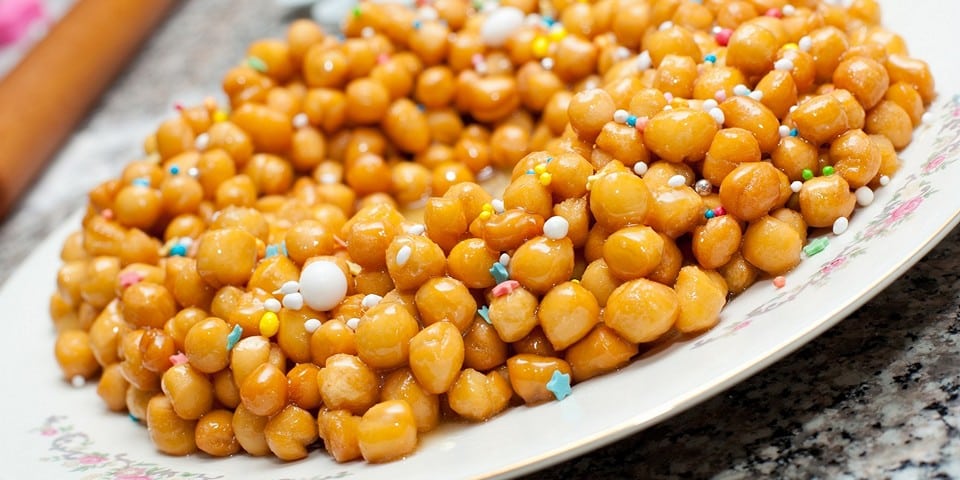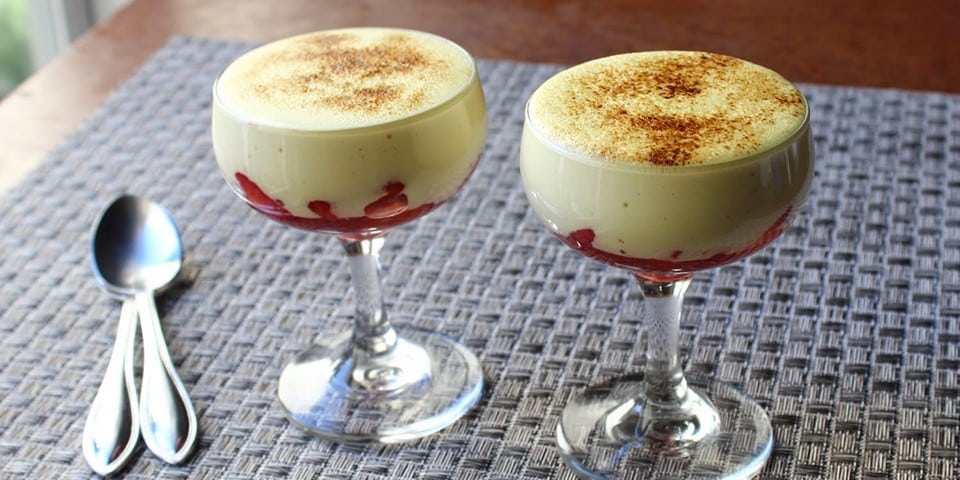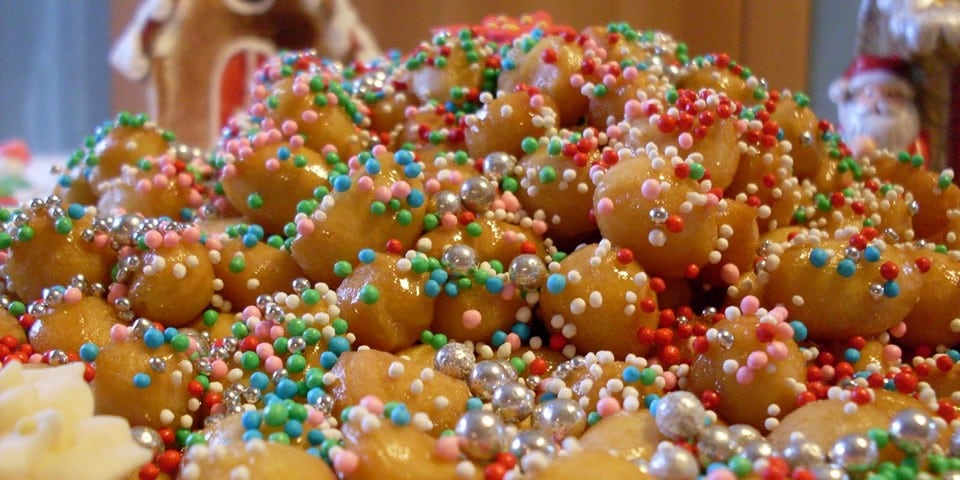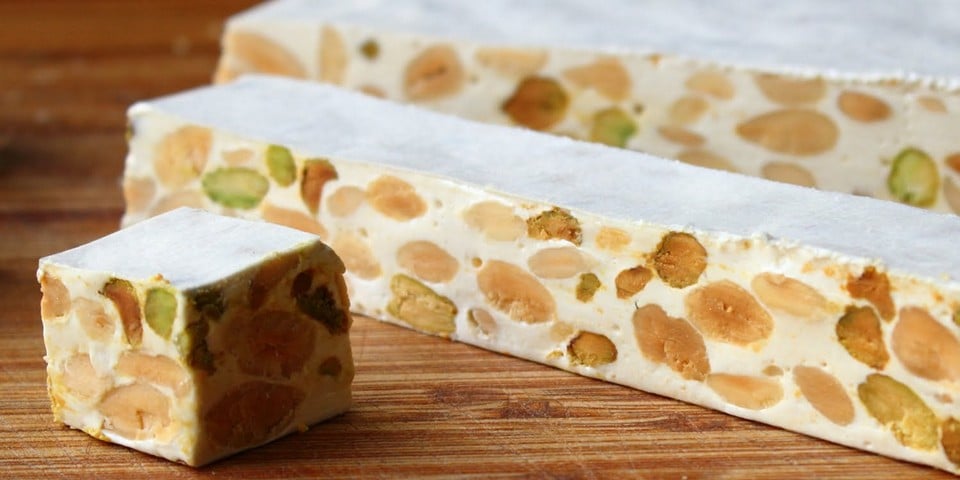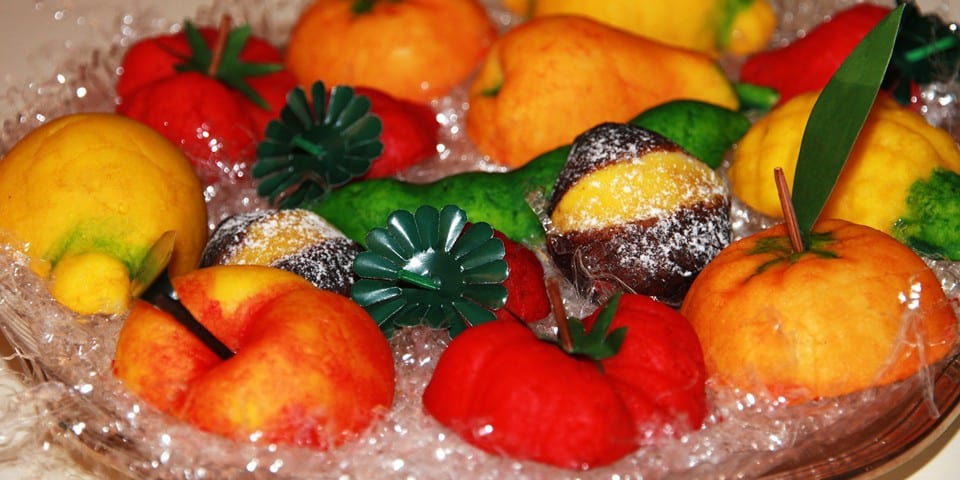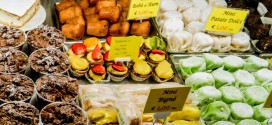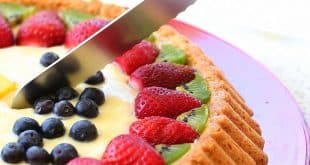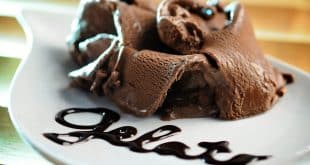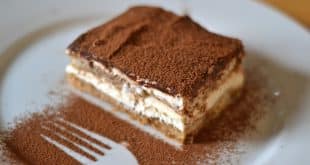Italian Desserts
Italian gastronomic traditions are an endless journey, and the list of desserts is no exception. Sweet recipes were born for various reasons. For example, cookies were invented for sailors who went on long voyages and took with them food for extended storage. More complex treats were often created to commemorate significant historical events or for celebrations.
The culture of not mixing flavors and serving sweets, known as Dolci in Italy, at the very end of the meal, emerged relatively recently among the country’s inhabitants in the 18th century. Before that, desserts opened meals and were even enjoyed as snacks between different courses. Moreover, sugar was sprinkled on everything, even meat and fish, to offset their saltiness slightly (as salt was the only preservative).
Fortunately, today Italian cuisine serves as an example of gastronomy for the whole world. And desserts once born in the republic have already become traditional treats in many countries.
Page Contents
Frozen Delights
Currently, frozen treats are popular not only in summer but also in the winter months. And while for us this phrase might evoke only one association – ice cream, for Italians, it encompasses a whole range of different desserts.
Affogato
Affogato, a dessert that consists of a scoop of ice cream drowned in hot espresso, is quite popular during the colder months, serving as an alternative to gelato. It’s garnished with chocolate shavings, berries, whipped cream, fruits, or cookies. There are versions of “the drowned one” with yogurt and alcoholic beverages.
Granita
Granita is a delicacy made from flavored ice and sugar. It differs from fruity gelato with its coarser crystalline structure. The main components of granita are water, sugar, and flavorings. The sugar content in this dessert ranges from 20-25%. Granita is flavored with natural ingredients like fruits, nuts, chocolate, or berries. The classic version features a lemony taste. Traditionally, it is served in transparent glasses accompanied by fresh pastries. Granita with a brioche (granita câ brioscia) is a typical breakfast for the people of Sicily (Sicilia).
Gelato
Gelato is the Italian classic ice cream. For creamy variations, it’s made with a base of milk and cream, while for sorbets, water is used. An essential component in any dessert is sugar.
In gelato, sugar not only adds flavor but also lowers the freezing temperature and increases viscosity. Only natural ingredients like chocolate, fruits, berries, and others are used as flavorings in this ice cream. If the classic gelato doesn’t contain egg yolks, stabilizers, and emulsifiers are used in minimal amounts. Before the final freezing, the mixture is whipped with air, with the content ranging from 35% (for artisanal varieties) to 70-100% (for industrial versions). To taste authentic Italian gelato, you can visit a special establishment known as a gelateria.
Semifreddo
Semifreddo is a cold Italian dessert, and its name translates to “half-frozen.” Unlike gelato, it contains both egg yolks and egg whites, making it a combination of ice cream and meringue. Semifreddo has about 50% air incorporated, which makes it sensitive to temperature changes and causes it to lose volume quickly in warm conditions. The classic way to serve this dessert is on a layer of sponge cake or in a “tuft” made from it.
Spumoni
Spumoni is a multi-layered ice cream with candied fruits and nuts. Each layer has its own flavor, often featuring fruit, nut, and vanilla flavors. Spumoni is particularly popular in the United States, Canada, and Argentina.
Candies
The candies category includes various sugar-based products, including pralines and sugared nuts. Italy offers a vast assortment of candies, but in this section, we will highlight only the most popular ones.
Gianduiotti
Gianduiotti are chocolate candies in the shape of an inverted boat, made from cocoa, milk, sugar, and Piedmont hazelnuts. Gianduiotti chocolate is renowned for its high quality and is included in Italy’s list of traditional food products. You can find them available as both whole bars and individually wrapped chocolate candies. It’s recommended to enjoy them with sparkling rosé or dessert wine, chilled to 9 degrees Fahrenheit (−13 degrees Celsius).
Confetto
Confetto are traditional candies for family celebrations. Most often, they are almonds covered with a sugar coating. Variations with hazelnuts, pistachios, and chocolate are also available. In Italy, different-colored confetto are chosen for various celebrations. For instance, white ones are used for weddings or First Holy Communions, red for graduations, pink and blue for baby births, and black for mourning events. A significant portion of Italian confetto is produced in Abruzzo and Campania.
Liquorice
Liquorice candies are flavored with licorice root extract. They come in various shapes, such as tubes, snowflakes, spirals, and more. Besides its taste, this treat is beneficial for health. Thanks to licorice, it soothes throat pain, reduces coughing, and aids in ulcer treatment.
Cioccolatini
Cioccolatini is the general term for Italian chocolate candies. Baci, or “Kisses,” are the most popular in the country. They are a blend of crushed hazelnuts and chocolate. Boeri are another favorite among Italians. They consist of a “drunken” cherry, traditionally soaked in grappa, enveloped in delicious dark chocolate.
Italian residents skillfully employ their culinary artistry to create chocolate candies of various shapes, colors, and sizes.
Sweet Pastries
Sweet pastries have tempted, continue to tempt, and undoubtedly will tempt people of all ages. Even those who diligently watch their health or adhere to a diet marvel at this culinary wonder. Italian pastry ranges from various liveries to donuts, cakes, and pies.
Amaretti
Amaretti are small almond cookies, traditional to the commune of Saronno. Their composition includes sugar, flour, and eggs. Nowadays, almonds are often replaced with Amaretto liqueur. According to legend, in the early 18th century, a young couple presented a cardinal visiting Saronno with this unique treat. The cookie so pleased the priest that he blessed the young couple for a long and happy marriage. To this day, the finest Amaretti are produced by descendants of this family.
Baba
Baba is a sweet pastry made from yeast dough, typical of Neapolitan bakeries. Its diameter can range from 5-7 to 35-40 cm. In terms of shape, Baba resembles our muffins. After baking, it is left for about a day to allow some moisture to escape. It is then immersed in containers with sugar syrup, rum, or other alcoholic beverages. Some pastry chefs coat the pastry with icing. There are variations of Baba with fillings such as cream, chocolate, and more.
Biscotti
Biscotti, or biscotti, is a dry and crumbly cookie born in the city of Prato. In Italy, it’s also known as cantuccini or cantucci. It’s crispy and has an elongated shape. To add flavor, fruits or nuts (traditionally whole almonds) are included. The first time, these cookies are baked in large loaves, which are then sliced into pieces and baked again for increased dryness. Hence the name “biscotti,” which means “twice-baked” in Italian. Italians enjoy dipping these cookies in wine to soften them and infuse them with flavor simultaneously.
Brutti ma Buoni
Brutti ma Buoni, a traditional Tuscan cookie, translates to “ugly but good.” It contains almonds, hazelnuts, pine nuts, oranges, and other fruits. Coarsely chopped nuts are mixed with powdered sugar or honey and beaten egg whites. Then, the cookies are baked in the oven and eaten when completely cooled. Their unique nutty flavor more than makes up for their unattractive appearance.
Zeppole
Zeppole is a typical Italian pastry resembling fried dough balls about 10 cm in diameter. They are similar to American donuts. The dough can be light and airy, but versions have a denser texture. Zeppole is dusted with powdered sugar and filled with pastry cream, ricotta cheese, or honey. Some variations of these donuts are savory and stuffed with anchovies.
Cavallucci
Cavallucci, a traditional Christmas pastry of Tuscan origin, translates literally to “little horses.” It contains anise, almonds, candied fruit, coriander, flour, water, and sugar (or honey).
Italians enjoy Cavallucci with fortified wine, first soaking them in the beverage.
Canestrelli
Canestrelli, a cookie typical of many regions in Italy, is especially popular in Piedmont (Piemonte) and Liguria (Liguria). There are many variations of Canestrelli, but the traditional version resembles a daisy with a hole in the center. The main ingredients include flour, eggs, butter, and sugar. The cookies are delicate and crumbly, often sprinkled with powdered sugar. They are frequently served with sparkling or dessert wine.
Colomba
Colomba pasquale, or the Italian “Easter dove,” is a traditional cake for the Easter holiday. The dough is made from flour, eggs, sugar, yeast, butter, and candied fruit. Before baking, it’s adorned with small crystals of refined sugar and almonds. Some manufacturers cover the “dove” with chocolate. Colomba cakes from Lombardy (Lombardia) and Sicily are included in the list of traditional Italian food products.
Crostata
Crostata, also known as “coppi” in Naples and “sfogliate” in Lombardy, is a pie with a base of shortcrust pastry filled with a sweet or savory filling. Crostata can be served as a dessert with jam, ricotta, custard, or Nutella. There are several ways to decorate the pie: fully open, closed, or adorned with a lattice made of dough. Traditionally, crostata has a rustic, not perfectly round shape.
Krumiri
Krumiri – Piedmontese cookies in the shape of a curved stick. They are made from flour, butter, honey, and eggs. Legend has it that the dessert was born in 1878 on the day of the death of King Vittorio Emanuele, which is why the cookies resemble his mustache in shape.
Pandoro
Pandoro – a sweet yeast bread. It is often baked for Christmas and New Year. It has the shape of a truncated cone, and its cross-section resembles an eight-pointed star. The dough is soft, golden in color, and has a scent of vanilla. Traditionally, there is no cream or candied fruit inside pandoro, although some modern pastry chefs offer versions with chocolate or custard. The dessert is served sprinkled with powdered sugar, resembling the snow-capped peaks of the Alps.
Panettone
Panettone – a sweet yeast bread originating from Milan. It is usually baked for Christmas. It has a cylindrical shape with a dome (similar to the Russian Easter kulich). Panettone often contains raisins, orange candied peel, or lemon zest for flavor. In different regions of Italy, there are variations of sweet bread with mascarpone cream or chocolate. In Milan, there is a tradition of not finishing the panettone on Christmas to eat a stale piece on an empty stomach on February 3rd (St. Basil’s Day). It is believed to prevent throat illnesses and colds.
Pastiera
Pastiera – a sweet Neapolitan pie typical for the Easter period. It uses shortcrust pastry as the base and ricotta cheese with eggs for the filling. The aroma and taste of the pastry vary depending on the spices and flavorings used. Cinnamon, candied fruit, orange zest, and orange blossom water are used in the classic version. Modern versions may include chocolate and custard.
Pizzella
Pizzella – waffle cookies originally from Abruzzo. In Lazio, they are known as “ferratella.” They can be either firm and crunchy or soft depending on the ingredients and preparation method. Traditionally, they are flavored with anise, vanilla, or lemon zest. Pizzelle are made using a textured iron to create a distinctive snowflake pattern. They are often used to make sweet sandwiches, spread with nut paste, or filled with ricotta similar to cannoli.
Ricciarelli
Ricciarelli, typical cookies from Siena, are similar to French macarons. They are made with almonds, sugar, and egg whites. They are often shaped like diamonds and can be covered with chocolate or dusted with powdered sugar. In 2010, Ricciarelli di Siena was granted the IGP (Indicazione Geografica Protetta) designation. Ricciarelli cookies are usually served with white wine.
Saint Joseph’s Cream Puffs
Saint Joseph’s Cream Puffs, known as Bigné di San Giuseppe in Italian, are light and airy pastries from Rome. They are typically prepared a few weeks before Saint Joseph’s Day on March 19th. These pastries are often deep-fried, filled with custard cream, and dusted with powdered sugar. The mildly sweet pastry contrasts beautifully with the creamy filling.
Sfogliatella
Sfogliatella is a crispy pastry shaped like a horn with a unique layered appearance. The dough is rolled out extremely thin, brushed with fat, and then rolled into a log to achieve its characteristic texture. It’s then sliced into discs about 2 cm thick, which are shaped into cones. Typically, these pastries have an orange flavor and are filled with ricotta. Other fillings may include whipped cream, chocolate cream, candied fruits, or jam.
Chenci
Chenci (Cenci) – fried pastries traditionally prepared during carnival season. The recipe is very simple, with no nuts or chocolate involved. In some regions, the dough is flavored with lemon or orange zest. Once ready, Chenci is lightly dusted with powdered sugar.
In our country, a similar type of pastry is called “hvorost.”
Cakes
Cakes are an essential part of any celebration. While a celebration might lack fruits, meat, or fish dishes, a beautiful and enticing dessert will always take center stage. Italian cakes today epitomize the pinnacle of pastry artistry.
Genovese or Genoese Cake
Genovese (Génoise) – a sponge cake named after the city of Genoa (Genova). The dessert is known for its dry texture, but sometimes the sponge layers are moistened with liqueur or sugar syrup. Buttercream is the most common choice for soaking and decorating. Additionally, fillings can include jelly, fruits, or chocolate. There are versions of the cake with chocolate sponge layers.
Caprese Cake
Caprese Cake (Caprese) – a chocolate cake with nuts, named after the island of Capri (Capri). The classic ingredients include butter, sugar, eggs, almond flour, and chocolate. After baking, the cake has a thin, crispy crust but a moist, soft center. Occasionally, liqueur or some other form of alcohol is added to the mix.
- We recommend reading about Italian Caprese Salad.
Cassata
Sicilian Cassata (Cassata Siciliana) is a cake native to Sicily. It consists of layers of round sponge cake soaked in fruit juice or liqueur, combined with ricotta cheese, fruits, and marzipan. Traditionally, the dessert is covered with icing and adorned with candied fruit. In Italy, there are countless variations of cassata, including some that are pretty unconventional. For example, in Messina, they replaced the ricotta filling with gelato. The Messina cake is not as sweet as the Palermo version.
- We recommend reading and visiting Rome’s Best Pastry Shops.
Tiramisu
Tiramisù is one of the most famous Italian desserts and, simultaneously, a cake without baking. It is made by layering ladyfinger biscuits (sponge fingers) soaked in coffee and a cream mixture of mascarpone cheese, sugar, and eggs. The classic version of this treat has a round shape and is dusted with cocoa powder. Modern pastry chefs use wine, liqueur, rum, and cocoa as a soak for the biscuits. The dessert can be garnished with fruits and berries.
Zuccotto
Цукотто (Zuccotto) – типичный торт флорентийской кулинарной традиции. Готовят его в форме купола. Он представляет собой «шапку» из бисквитного теста, заполненную начинкой. В качестве последней используют рикотту или взбитые сливки в сочетании с ягодами, цукатами, шоколадной крошкой. Подают цукотто, предварительно хорошо охладив.
Zuccotto is a typical cake of Florentine culinary tradition. It is prepared in the shape of a dome, resembling a “hat” made of sponge cake, filled with a filling. The filling can consist of ricotta or whipped cream combined with berries, candied fruit, and chocolate crumbs. Zuccotto is served after being thoroughly chilled.
Unusual Desserts
In this section, we’ve decided to highlight desserts that are challenging to categorize within any specific group. Some of them don’t fit into the categories of pastries or cakes. And for some Italian treats, we, with our gastronomic habits, might pair them with a roll, for example. But for the residents of the republic, these are separate standalone sweet dishes.
Budino
Budino is a delicate dessert, an Italian version of pudding. It’s prepared from milk, sugar, natural flavorings (such as fruits, chocolate, nuts, liqueur, vanilla), and thickeners (flour, starch, gelatin, semolina). It most often takes the shape of a truncated cone. Budino is served at the end of a meal, adorned with cookies, whipped cream, fresh fruits, or berries.
Cannolo
Cannolo is a Sicilian delicacy included in the list of traditional Italian food products. Cannolo consists of a tube of fried dough filled with ricotta cheese, candied fruit, nuts, or chocolate chips and dusted with powdered sugar. The filling is added just before serving to preserve its crispiness. Although some pastry chefs coat the inside of the tube with chocolate to prevent sogginess. Initially, this dessert was prepared during the last week before Lent, but due to high demand, it is now baked year-round.
Marron Glacé
Marron Glacé is a confection made from chestnuts coated with sugar glaze. Suitable chestnuts are soaked in water for about 9 days. Then, the peeled chestnuts are boiled in sugar syrup, dried, and baked in the oven to achieve a sugary coating. Marron Glacé is enjoyed on its own and is also used in the recipes of some desserts (gelato, cakes, sweet sauces).
Nutella
Nutella is a chocolate-hazelnut spread originating from Piedmont. It came into existence as an alternative to chocolate after high taxes were imposed on cocoa beans. The modern Nutella includes sugar, palm oil, hazelnuts, cocoa, dry milk, lecithin, and vanillin. People enjoy it by spreading it on bread or using it in the recipes of other desserts.
Nociata
Nociata is a dessert typical of the regions of Umbria and Lazio. It is primarily made from walnuts. Walnuts are ground and mixed with honey and beaten egg whites. The resulting mixture is spread flat and cut into small bars. Nociata is traditionally made during Christmas.
Panna Cotta
Panna Cotta, which literally translates to “cooked cream,” is a dessert made from cream, sugar, and gelatin. The classic version is flavored with vanilla, but modern pastry chefs enhance the traditional recipe with rum, coffee, or cocoa. Panna Cotta is served with berry, caramel, or chocolate sauce and can be garnished with fruits or a drizzle of liqueur.
Panforte
Panforte is a Tuscan fruit and nut dessert. Its preparation is simple: sugar or honey is mixed with fruits, nuts, spices, flour, and water. After baking, it is dusted with powdered sugar. Panforte translates to “strong bread” because of its spicy aroma (its original name is Panpepato, meaning “peppered bread”). In appearance, the dessert resembles gingerbread or a dense cake. In 2013, Panforte di Siena gained the IGP (Indication of Geographic Protection) status.
Usually, it is served with coffee or dessert wine after a meal, but some Italians prefer to indulge in this treat for breakfast.
Easter Lamb
The Easter Lamb (Agnello pasquale) is a dessert typical of the city of Favara. It is made from almond and pistachio paste (ground nuts with sugar and water) and flavored with lemon zest and vanilla. This treat is shaped like a lamb (symbolizing that Jesus is the Lamb of God) and decorated with “curls” made of sugar frosting.
Pignolata
Pignolata is a dessert commonly found in the cities of Messina and Reggio di Calabria. It looks like a cluster of differently-sized pine cones covered in glaze. These are small pieces of fried dough, with one half coated in chocolate and the other half in lemon syrup. The dessert is served very chilled. In Southern Italy, there is a variation called “pignolata al miele,” which consists of dough balls coated in honey and sprinkled with chopped almonds.
Zabaglione
Zabaglione is a dessert made from egg yolks, sugar, and wine. In terms of texture, it resembles a custard or thick sauce. Zabaglione is often sprinkled with chocolate crumbs, lemon or orange zest to enhance its flavor. It is served warm or at room temperature and can be garnished with biscuit crumbs or wafers.
Struffoli
Struffoli is a Neapolitan Christmas treat. These are crispy balls, fried until they are about 1 cm in diameter. A lighter version involves baking the dough balls in the oven. Traditionally, they are mixed with honey, cinnamon, crushed nuts, and orange zest. Struffoli is served warm.
Torrone
Torrone, or Turron, is a confection made from honey, sugar, egg whites, and nuts. In Italy, almonds, hazelnuts, or pistachios are commonly used. There are many varieties of torrone, differing not only in flavor but also in hardness. It can be soft, chewy, or slightly crunchy. In Campania, Strega liqueur is sometimes added to the dessert.
Frutta di Martorana
Frutta di Martorana is a traditional Sicilian treat. It’s a marzipan pastry shaped like fruits and vegetables. Frutta di Martorana is included in the list of traditional Italian food products. Typically, it’s enjoyed alongside wine.
These are the Italian desserts for you. Nowadays, many people try to avoid sweets in their pursuit of robust health or a slim waistline. Remember, moderation is key. A small piece of these exquisite treats can give you energy and lift your spirits. Life is simply not as sweet without sweets. Dolce vita, dear readers!
 Italy for me From Italy with love
Italy for me From Italy with love

